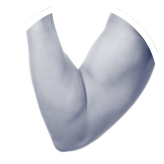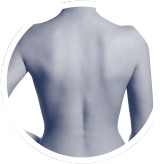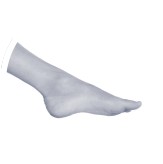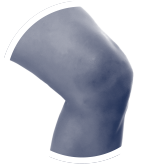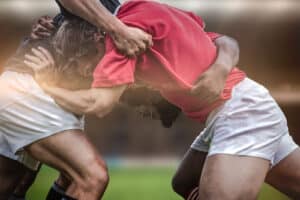
What you need to know about Knee Collateral Ligament injuries
People who actively participate in any sport that involves speed, change of direction and some contact have a high chance of suffering from knee collateral ligament injuries. This type of injury can be painful and quite debilitating, as it causes the knee to swell and feel quite unstable, making running and even walking difficult. It also affects their performance in the field, which is a setback for professionals and anyone wanting to play regular sports.
The collateral ligaments can tear or stretch at any time. This injury usually affects more men than women, especially men in their 20-40s.
But what are the causes and symptoms, and how do we treat knee collateral ligament injuries? This guide elaborates on all these in detail.
Anatomy of the Knee Ligaments
Three bones form your knee joint:
- Femur (thighbone)
- Tibia (shinbone)
- Patella (kneecap). The kneecap sits in front of the joint to protect the knee.
The ligaments connect the bones to other bones. They are made of very strong tissue that acts as a rope to hold the bones together and provide stability to your knee joint.
There are four primary ligaments in your knee.
- Collateral ligaments are found on either side of your knee. They control the side-to-side motion of your knee and brace it against unusual movement.
- The medial collateral ligament (MCL) is on the inside. It connects the femur to the tibia.
- The lateral collateral ligament (LCL) is on the outside. It connects the femur to the fibula (the smaller bone in the lower leg).
- Cruciate ligaments. These are found inside your knee joint. They cross each other to form an X, with the anterior cruciate ligament in front and the posterior cruciate ligament in back. The cruciate ligaments control the front and back motion of your knee.
What is a Collateral Ligament Injury?
If you have injured ligaments, they are considered sprains, and the extent of the injury determines their grade on the severity scale.
Grade 1 Sprains
If you have mild injuries on the ligaments, they are considered grade 1 sprains. It means your ligaments are not seriously injured or stretched, and your knee joint remains stable.
Grade 2 Sprains
Unlike grade 1 sprains, grade 2 sprains make the knee joints unstable or loose. Experts refer to this kind of injury as a partial ligament tear.
Grade 3 Sprains
Grade 3 sprains are severe injuries of the collateral ligaments. It means the ligament has a complete tear or is pulled off the bone. With such an injury, your knee remains unstable and requires the doctor’s intervention.
Medial collateral ligament injuries are more common than lateral collateral ligament injuries. Moreover, if you injure the LCL, other structures in your knee joint will likely suffer.
What Causes Collateral Ligaments Injuries?
Collateral ligament injuries occur when the knee joints experience excessive pressure that pushes the knee sideways. For example, MLC tears result from a direct blow outside the knee. The force pushes the knee inwards towards the other knee. However, the pressure inside the knee pushes it outward, and it causes the lateral collateral ligament. Collateral ligament injuries mostly occur if you are struck outside or inside your knee or after experiencing a twisting injury.
It is a very common injury in footballers, skiers, basketball players and rugby players.
Symptoms of Collateral Ligaments Injuries
When the injury occurs, the first symptom you might realise is a loud pop sound. After that, expect to experience pain on the sides of your knee. Depending on the affected part, the pain might sometimes be from inside the knee.
- Pain over the site of injury. Increased pain with weight bearing or twisting.
- Swelling – This is usually seen on the side of the injury but can be the whole knee.
- The feeling of instability and giving way
- Loss of function – difficulty walking and doing stairs.
How is a Collateral Knee Ligament Injury Diagnosed?
If you think you have a knee ligament injury, you must seek professional medical advice as soon as possible. Early diagnosis will lead to early treatment and a speedy recovery.
At London Bridge Orthopaedics, we have four Specialist Knee Consultants. Please get in touch to book an appointment by calling 0203 576 5296 or booking online.
Physical Examination
At your initial appointment, your specialist will diagnose your knee injury. They will take a thorough medical history: asking questions about your symptoms and the nature of your injury and getting a clear picture of any past injuries or medical conditions.
They will then do a physical examination to confirm their diagnosis. This will include looking at how you walk and move, testing your knee range of movement and your muscle strength, alongside palpating the injured area to feel for any tissue damage.
Imaging Tests
If your consultant feels they need to know more about the injury after the physical examination, they can recommend imaging tests. The common types of tests your doctor may recommend include:
X Rays
This type of test shows any bone injuries and is helpful to rule out any fractures.
Magnetic Resonance Imaging (MRI) scan
MRI scans show clear images of soft tissues, like your collateral ligaments, and is a very precise test.
The Best Treatment for Collateral Ligament Injuries
Different ligament injuries require different types of treatment, so your doctor must know your type of injury before settling on the right treatment. Remember, not all injuries require medical treatment or surgery. Your consultant will talk through all your options with you and will make a plan together that is right for you.
The treatment options include the following:
Non-Surgical Treatment
Non-surgical treatment is an ideal choice if your injuries are not severe.
Physiotherapy
Physiotherapy is nearly always the first line of treatment for most ligament injuries, even if you require surgery. It will mostly involve strengthening exercises, range of movement and proprioception exercises, that can help your knee become stable. At London Bridge Orthopaedics we work with some of the best physiotherapists and clinics in London, and we will make sure that you receive the best possible care.
Icing
Using ice on the injury can help reduce the pain after suffering from an MCL. It speeds up the healing process and helps manage your pain and swelling. You should apply the ice for 15-20 minutes every couple of hours. Use crushed ice directly on the affected area to see better results.
Bracing
Since most collateral ligament injuries result from sideways force, it is best to prevent this from recurring. Consider changing your daily routine that involves risky movements. You can also use a brace to reduce stress on the injured ligament; the brace also offers support and stabilises the knee.
Medication
Some medicines can also help you manage pain and swelling after a collateral ligament injury. The most common medications are painkillers and non-steroidal anti-inflammatory medication, also known as NSAIDs.
Ensure you talk to your doctor before using any medicines, only take the recommended dosage and seek further medical assistance when the pain persists.
Rest and Activity Modification
Your consultant might also recommend using crutches to reduce the weight you put on your leg. Resting and limiting your activity level will prevent unnecessary movement, stress and weight on the leg. It is important to be guided by your Physiotherapist to ensure you maximise your recovery.
Surgical Treatment
Even though most knee collateral ligament injuries are treatable without undergoing surgery, there are instances when this is the only option. Surgery may be considered if you need to return to sports that involve changing direction and jumping and/or if your collateral ligament is severely torn and is not healing following conservative treatment. It is also a good option if you have multi-ligament injuries which involve both the collateral ligaments and cruciate ligaments. The techniques vary depending on your injury and what procedure your surgeon feels is best for you.
If necessary, your knee surgery can be arranged with a minimum delay. Most arthroscopic (keyhole surgery) and minimally invasive surgery can often be carried out on a day-case basis.
Bottom Line
If you are active physically or engage in rigorous sports, you might experience a collateral ligament injury at any time, as accidents are inevitable.
Seek early medical attention to ascertain the degree of the injury and determine your best treatment options to optimise your recovery outcome.
London Bridge Orthopaedics
London Bridge Orthopaedics is based in the United Kingdom, with our new headquarters at The Shard. Looking for the latest and most efficient orthopaedic services? We’ve got you covered.
We are orthopaedic specialist consultants, and we will take good care of all your orthopaedic needs, whatever your injury.
Our highly qualified and experienced team offer exceptionally high-standard care that includes:
- Including the patient in all decision-making.
- Offering personalised patient care that suits your needs.
- Performing surgical procedures only when absolutely required and in your best interest.
For quality and effective treatment of knee problems, call London Bridge Orthopaedics on 020 3576 5296 or book an appointment online to get the best services today.



